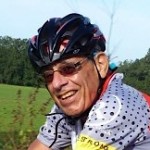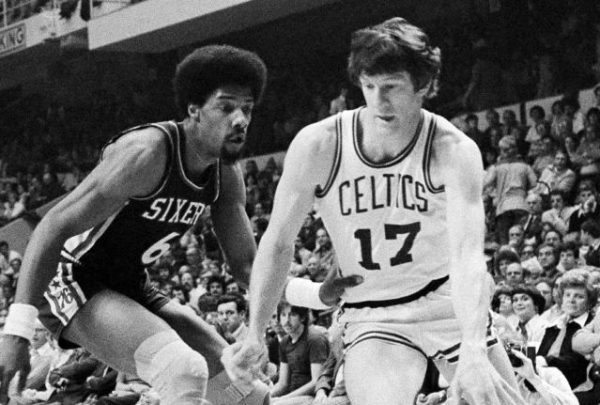
John Havlicek was one of the most gifted athletes ever. At Bridgeport High School in Ohio he was All State in basketball, baseball and football, and then he went to Ohio State where he played basketball on an NCAA championship team. After college, he was drafted by both the Boston Celtics of the NBA and the Cleveland Browns of the NFL, and he elected to play basketball for the Boston Celtics. Over 16 seasons from 1962-1978, he scored 26,395 points, averaged 20.8 points a game, was named to five NBA all-defensive teams, won eight NBA championships and played in 13 All-Star games. In 1984, he was inducted into the Basketball Hall of Fame.
In 2019, after several years of battling Parkinson’s disease that caused him to lose control of his muscles, he injured himself in a fall and developed pneumonia that prevented his brain from getting enough oxygen. Doctors tried to save his life by putting him into a deep coma but he died three weeks later, most likely from heart failure caused by brain damage because he was not able to breathe in enough oxygen.

His Life Story
Havlicek was born in 1940 in Martin’s Ferry, Ohio. His father was an immigrant from Czechoslovakia, and his mother had Croation roots but was born in the United States. They ran a general store and the family lived in a modest apartment above the store. A childhood friend gave him the nickname “Hondo” after the hero in the 1953 movie starring John Wayne. Havlicek didn’t have a bicycle, so he ran everywhere to keep up with his friends. In his 1977 autobiography, Hondo: Celtic Man in Motion, he said, “Maybe that’s where I developed my stamina.” He told a Sports Illustrated reporter that his lungs were so large that they “have to take two chest X-rays to fit them in.”
He met his wife, Beth, while they attended Ohio State University, and they married in 1967. They had a son who attended the University of Virginia on a basketball scholarship and a daughter who married a former Major League Baseball outfielder. After retiring from basketball in 1978, Havlicek worked as vice president of International Manufacturing & Marketing Corporation in Columbus, Ohio, and did motivational speaking. He was able to retire and play a lot of golf because he had invested early in the Wendy’s fast food restaurant chain. During his last years he suffered from severe, aggressive and debilitating Parkinson’s disease, and he died in hospice care on April 25, 2019 at age 79.
Parkinson’s Disease
Parkinson’s disease is a condition of brain damage that can cause shaking, stiffness, and difficulty with walking, balancing, and coordination, and can progress to damage every brain function. Parkinson’s disease occurs when brain nerve cells that control muscles reduce production of dopamine that sends messages from nerves to muscles, and of norepinephrine that controls part of the involuntary nervous system. The symptoms usually begin gradually and increase over time:
• difficulty walking and talking
• loss of memory
• depression
• difficulty sleeping
• acting out dreams
• fatigue
• damage to smell, taste, seeing, hearing, and feeling
• decreased sexual function and desire
• swallowing problems
• difficulty chewing
• incontinence
• irregular heartbeats
• high and low blood pressure
• constipation
• dizziness on standing up
• pain
If the Parkinson’s symptoms start before age 60, the disease may be hereditary, but for the majority of people who develop it after age 60, it does not appear to be a hereditary disease.
Athletes and Parkinson’s Disease
Current research shows that even one concussion is associated with increased risk for Parkinson’s disease (Neurology, April 18, 2018). Professional soccer players have been shown to be at increased risk for Parkinson’s disease (N Engl J Med, Nov 7, 2019; 381:1801-1808), as are participants in other contact sports (J Neuropath and Exper Neur, July 25, 2018). Muhammad Ali won 55 of his 61 professional fights, but suffered from a tremendous amount of head trauma and was diagnosed with Parkinson’s disease three years after he stopped fighting.
Jerry Sloan, Brian Grant and John Havlicek are the only basketball players that I know of who had Parkinson’s disease. Jimmy Piersall, Dave Parker and Kirk Gibson are three outfielders in baseball who had this disease. Football players are at significantly increased risk for Parkinson’s disease, probably because of increased risk for head trauma (Neurology, September 6, 2012).
Can Exercise Help to Prevent or Treat Parkinson’s Disease?
Other than the danger of head injuries, participating in sports has not been shown to increase risk for Parkinson’s disease. People who exercise intensely and regularly and those who begin to participate in sports before age five are at reduced risk for Parkinson’s disease (Parkinsonism Relat Disord, Jul 2016; 28:112-7). High intensity interval training has been shown in several studies to help control symptoms of Parkinson’s disease (J Appl Physiol, Mar 1, 2014;116(5):582–592; J of Appl Physiol, March 2014;116(5):582-592).
The most complete study on the subject concludes that there is disagreement whether exercise increases, prevents or treats Parkinson’s disease (J Neurol Neurosurg Psychiatry, 2006 Dec; 77(12): 1318–1322). Several studies have shown that exercise is associated with reduced risk for dementia and Alzheimer’s disease (Arch Intern Med, 20011611703–1708; Am J Epidemiol, 2002156445–453). Animal studies show that treadmill running decreases dopamine depletion (Exp Neurol, 2005;193:181–197) and symptoms of Parkinson’s disease ( Neuroscience 2003;119:899–911). Prospective studies in humans show a decreased risk for Parkinson’s disease with exercise (Neurology, 2005;64:664–669; Clin Neurol Neurosurg, 2002;104:328–333).
Other Factors Associated with Decreased Risk for Parkinson’s Disease
Healthful Gut Bacteria: Recent research shows that Parkinson’s disease may start in intestinal nerves. In Parkinson’s disease, unhealthful intestinal bacteria cause intestinal nerves to secrete a protein called alpha-synuclein to accumulate first in the intestines and then in the brain to form Lewy bodies in the brain characteristic of Parkinson’s disease (Movement Disorders, Mar 1, 2015;30(3):350-8). Healthful and harmful bacteria live in your colon, and you can promote the growth of healthful colon bacteria that decrease inflammation by exercising regularly, eating a plant-based diet, and avoiding insecticides and other harmful chemicals
Diet: A Mediterranean-style diet, based on eating lots of plants and seafood, and restricting meat, dairy and poultry, is associated with reduced risk of developing Parkinson’s disease (Movement Disorders, Feb 7, 2012; Europ J Neur, Dec 5, 2011). A diet high in flavinoids such as those found in tea, berries, apples, oranges may also help to prevent Parkinson’s disease (Neurology, Apr 10, 2012;78(15):1138-45).
Caffeine: Those who drink 3-5 cups a day of caffeinated beverages, such as coffee or tea, have a reduced incidence of Parkinson’s disease (Am J Epidemiol, 2015 May 15;181(10):808-816).
My Recommendations
More than ten million people live today with Parkinson’s disease that usually starts after age 60 and can affect every known brain function. We have drugs that can slow down progression but we do not have a cure. Possible lifestyle changes that may help to protect a person from Parkinson’s disease, and to ease some of the symptoms in Parkinson’s patients, include exercising regularly, eating a plant-based diet, and avoiding insecticides.
Dr. Gabe Mirkin is a Villager. Learn more at www.drmirkin.com

